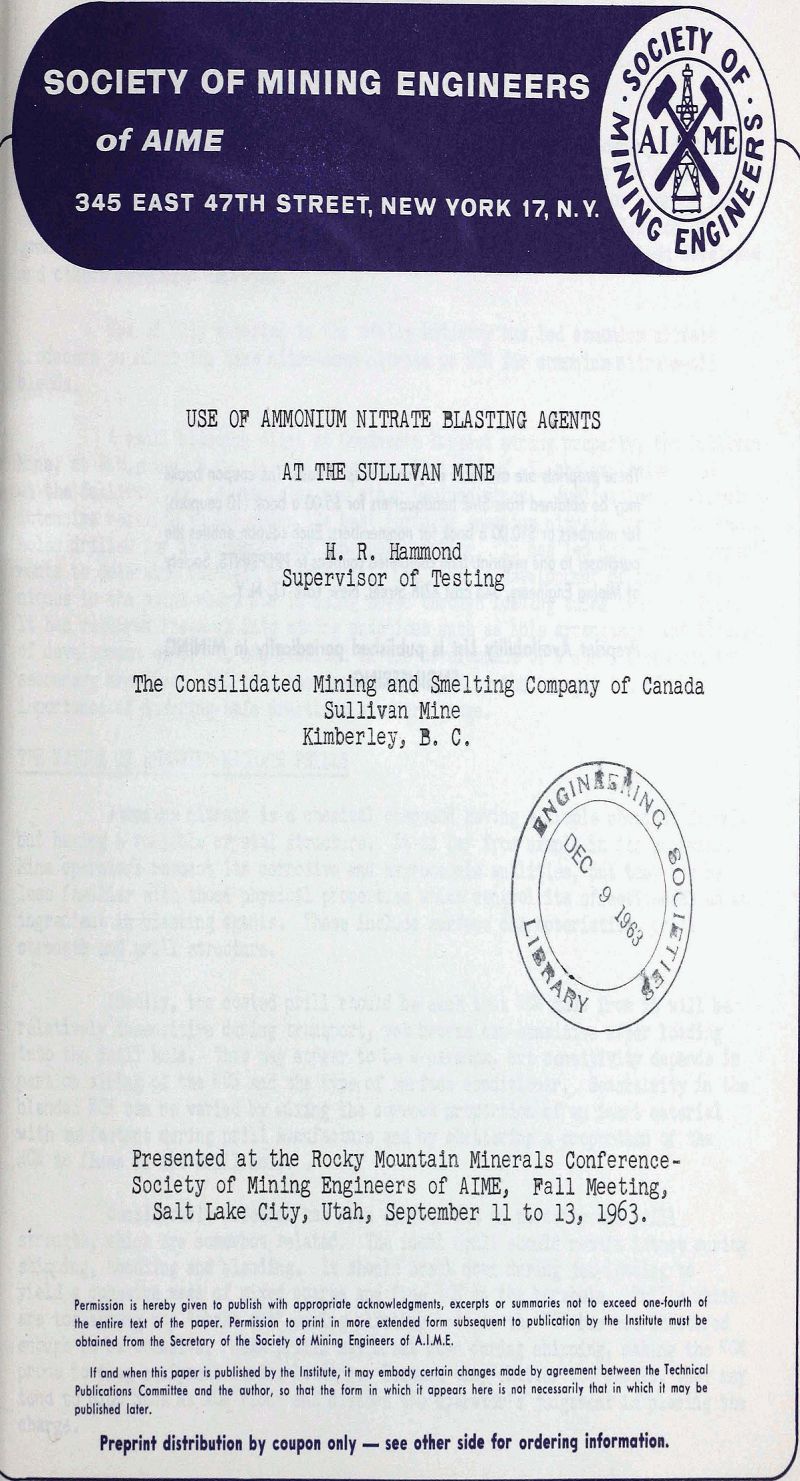The situation of The Consolidated Mining and Smelting Company of Canada Limited, or Cominco, may be somewhat unique in that the Company is not only a manufacturer of ammonium nitrate, but as a mining company is a major user of its own product. This situation has resulted in highly successful application of ammonium nitrate-oil explosives. Several noteworthy techniques have been developed and others have been improved.
Use of this material in the mining industry has led ammonium nitrate producers to adopt the term nitro-carbo-nitrate or NCN for ammonium nitrate-oil blends.
A small blending plant at Cominco’s largest mining property, the Sullivan Mine, at Kimberley, B.C., is producing more than 80% of all the explosive used at the Sullivan, and is supplying two other Cominco mines. Application has required intensive research to determine the best forms of ammonium nitrate for use in small holes drilled for development and long-hole stoping. It has led not only to experiments to determine the best blending oil, but also to development of loading techniques to the point where NCN is being moved through loading tubes over 700 feet. It has required research into mining practices such as hole arrangement and blasting of development cuts. It has resulted in the development of a special product for secondary breaking. All this has been accompanied by the recognition of the importance of insuring safe practices at every stage.
The NCN Blending Plant at the Sullivan Mine is located on surface convenient to mine-services. Its capacity, about five tons per shift for a two-man crew, is adequate to supply local requirements. In the blender, prills are gently tumbled in a stainless steel drum while oil is slowly added. Red dye is added to the oil for product identification and as an aid in spotting missed holes.
The product from the blending drum may either be bagged directly and shipped underground for use in pneumatic loaders or it may be specially processed for use in secondary breaking. For this latter application, prilled NCN is pulverized by jetting it at high velocity against a stainless steel plate. Normally this product, known locally as “Fine NCN”, contains less than 1% whole prills and at least 60% will pass a 28 mesh screen.
Short holes are used for development and small open-stope blasts. There has been no basic change in Sullivan Mine drilling practice which calls for holes 1-3/8 inches in diameter, six to ten feet long, mostly inclined upward. NCN techniques which suited previous drilling practice were selected with one noteworthy exception. It was necessary to design a special burn cut.
Before the introduction of NCN the usual cut was the six-hole burn cut with two diagonally opposite holes blasted. Early research indicated that NCN in one hole was frequently desensitized by firing an immediately adjacent hole. Desensitization of explosives by compaction is not unknown with conventional dynamite, but is more likely to occur with NCN because pneumatic loading leaves no cushioning voids in the loaded column.
Most of the Sullivan Mine production comes from long-hole blasts. These can be classified as either infrequent large pillar blasts of up to 1,000,000 tons or routine small stope blasts of less than 15,000 tons. For small blasts NCN is usually used. However usage to date in large pillar blasts has been confined to relatively dry ground because the explosive maybe exposed to moisture in the bore-holes up to two weeks before blasting takes place.
